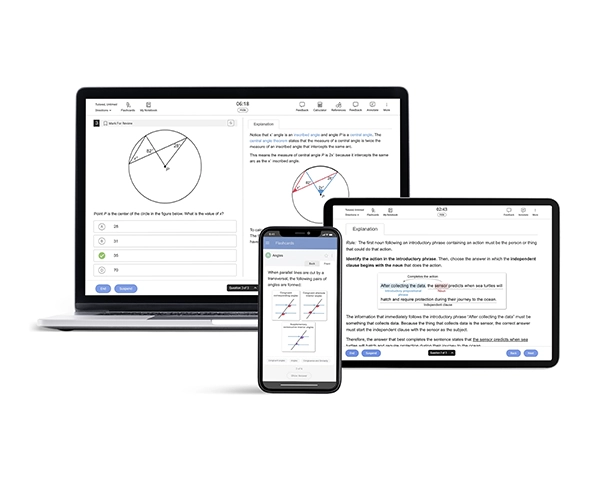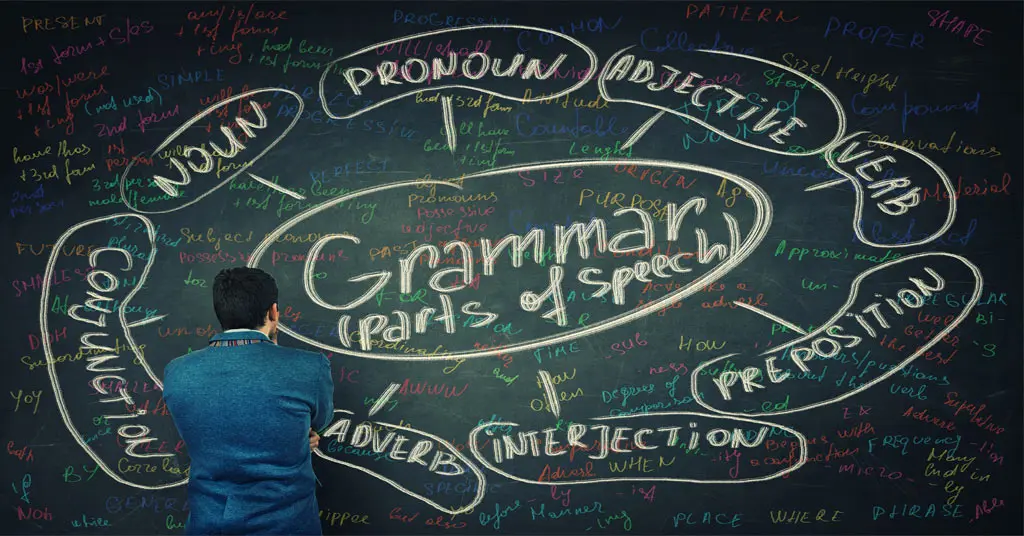What Is Considered a Good SAT Score?
A good SAT® score is one that ranks higher than the national average and places you ahead of most test-takers based on percentile data. According to the College Board®, the national average SAT score typically falls around 1020–1050, so anything above this range is considered stronger than average. Many students aiming for competitive colleges target scores in the 1200–1390 range, which often places them in the 70th to 90th percentile. To understand where your score falls, here’s a quick look at how SAT percentiles break down based on recent College Board data:
- Excellent Score (Top 1%): 1510 or higher
- Good Score (Top 25%): 1150 or higher
- Average Score (50th Percentile): 1000–1050
- Below Average Score (Bottom 25%): 880 or lower
Good SAT Scores by Section (Math, Reading & Writing)
A good SAT section score varies based on percentiles. For Math, scores in the 580–600 range typically place students in the 71st to 76th percentile, signaling strong quantitative reasoning skills. Math scores in the 600s are considered solidly above average, while scores above 700 place students within the top 10% of test-takers, which many students consider when aiming for the best SAT score for competitive programs.
For the Reading and Writing section, scores in the 580–590 range usually fall in the 72nd to 75th percentile. Performance at this level reflects strong comprehension, grammar mastery, and critical reading skills. More selective colleges often expect Reading and Writing scores closer to 650–700+, especially for majors that are writing-intensive or humanities-focused.
Understanding how each section compares to national percentiles helps determine whether your score aligns with your academic goals. Higher section scores increase competitiveness for selective programs and contribute to a stronger overall SAT profile.
What Is a Good SAT Score for College Admissions
A good SAT score for college admissions varies widely based on selectivity:
- State universities and broad-access colleges: Often consider 1100–1200 strong.
- Competitive public universities: Usually look for 1250–1400.
- Highly selective private colleges: Often expect 1400–1500+.
- Top-tier institutions: Frequently look for scores in the top 10% of test-takers (1400–1550+).
College Board emphasizes that a "good" score meets the middle 50% range of accepted students at your target schools. Admissions teams also use SAT scores to compare applicants from different high schools, but the score that’s “good enough” is the one that aligns with your target colleges.
What Is a Good SAT Score for the Ivy League?
For Ivy League and similarly elite institutions, a “good” score is typically:
- Composite: 1500–1560+
- Section scores: Often in the 720–780 range for both Math and Reading & Writing
These schools are among the most selective in the country; their admitted student percentiles often fall in the 97th–99th percentile nationwide. A score in this range signals academic strength but does not guarantee admission; holistic factors like GPA, coursework rigor, essays, and extracurriculars still matter greatly.
What Is Considered a Bad SAT Score?
A low SAT score is generally one that falls below the national average or places you in the bottom 40% of test-takers. In most testing years, this typically includes scores below 1000, which are considered below-average performance. However, a low score does not mean your college options disappear. Many schools use holistic admissions, looking at factors like GPA, coursework, essays, and extracurriculars, and several colleges remain test-optional.
A score is only bad relative to your goals. If your SAT score does not match the middle 50% score range of the colleges you’re targeting, it may be considered low for those specific institutions. The good news is that SAT scores are highly improvable; students often see meaningful gains through focused practice, retaking the test, and using quality prep materials. With strategic preparation, many students raise their scores significantly on their next attempt.
Good SAT Score by College Type (Table)
SAT score expectations vary widely depending on the selectivity of the college. Below is the table of 30 colleges and their typical SAT score ranges:
| Name of College | Score Range | Name of College | Score Range |
|---|---|---|---|
| Massachusetts Institute of Technology | 1520-1570 | Boston University | 1410-1500 |
| Washington University in St. Louis | 1500-1570 | College of William and Mary | 1365-1510 |
| Duke University | 1520-1570 | Amherst College | 1480-1550 |
| Vanderbilt University | 1500-1560 | Georgia Institute of Technology | 1330-1510 |
| Johns Hopkins University | 1530-1560 | Trinity University | 1290-1440 |
| Princeton University | 1470-1560 | George Washington University | 1320-1460 |
| Yale University | 1500-1560 | Babson College | 1400-1480 |
| Columbia University | 1500-1560 | Rhode Island School of Design | 1390-1520 |
| Brown University | 1470-1550 | Florida State University | 1250-1380 |
| Northeastern University | 1460-1530 | University of Michigan, Ann Arbor | 1350-1530 |
| Georgetown University | 1390-1530 | The College of New Jersey | 1150-1330 |
| Hamilton College | 1430-1520 | Texas Christian University | 1160-1370 |
| Middlebury College | 1440-1530 | Southwestern University | 1180-1320 |
| Washington and Lee University | 1410-1530 | Howard University | 1110-1290 |
| University of Chicago | 1510 - 1560 | Spelman College | 1050-1250 |
| Source: College Board | |||
Good SAT Score vs. Bad SAT Score for Scholarships
Scholarship committees often use SAT scores as part of their selection criteria. While each program sets its own standards, higher scores generally expand your eligibility for merit awards, honors programs, and tuition discounts. A strong SAT score shows academic readiness, while a lower score may limit access to competitive scholarships.
Here’s how SAT scores typically break down when it comes to scholarship opportunities:
Good SAT Scores for Scholarships
Students often qualify for more merit-based awards when they score:
- 1300–1500+ for many statewide merit scholarships
- 1400–1550 for competitive honors programs
- 1450–1550+ for selective private or institutional scholarships
- Top 10–15% percentile for highly competitive academic awards
These ranges improve your chances significantly, especially when paired with strong grades and extracurriculars. If you're aiming for this level, building skills with targeted SAT practice questions and a full-length practice test can help identify areas to strengthen. A structured SAT prep course can provide deeper practice and test-day strategies.
Considerably Bad SAT Scores for Scholarships
A score may be considered "bad" for scholarships if it falls:
- Below 1100, which is the cutoff for many merit-based programs.
- Below the minimum score requirement listed by the scholarship provider.
- Below the average scores of previously awarded recipients.
A lower score doesn’t take you out of the running entirely; some programs emphasize GPA, leadership, or personal essays. But improving your SAT score opens more opportunities.
How to Improve Your Scholarship Eligibility
If your score isn’t yet competitive, you can always raise it with better preparation:
- Use the SAT study guide to set a focused plan.
- Practice consistently with high-quality practice questions.
- Evaluate your progress using a realistic SAT practice test.
- Strengthen weak areas through a step-by-step SAT course designed to mirror the real exam.
Frequently Asked Questions (FAQs)
Is 1200 a good SAT score?
A 1200 SAT score is generally considered a good SAT score because it sits above the national average of around 1020–1050. It typically places you in the top half of test-takers and aligns with a solid, good SAT score range for many public and private universities.
Whether it’s “good enough” depends on your target schools. Many moderately selective colleges view a 1200 as competitive, especially when supported by a strong GPA and activities. It can also qualify you for some merit aid programs.
If you’re aiming for highly selective universities, you may need a higher score, often 1350–1500+. Still, a 1200 provides a solid foundation, and many students choose to improve their score with additional practice.
Is 1000 a bad SAT score?
A 1000 SAT score falls near the national average, but it is often considered below average for more selective colleges. In most testing years, a score around 1000 typically places students in the 40th–50th percentile, meaning it is competitive for some schools but not for institutions with higher admission standards.
Some colleges, especially less selective or test-optional institutions, may still accept students with a 1000, depending on the strength of the rest of the application. For many accessible colleges, this score is workable.
If your target schools have middle 50% ranges above 1100–1200, improving your SAT score could make you more competitive. Fortunately, students who retake the test often raise their scores meaningfully.
How Do You Know If Your SAT Scores Need Improvement?
You may need to improve your SAT score if it falls below the middle 50% score range of your preferred colleges. Understanding what is a good SAT score for each school starts with comparing your results to the averages of previously admitted students. If your score is noticeably lower than those ranges, boosting it can make your application more competitive.
Percentile rank also helps you evaluate your standing. Scores below the 60th percentile often limit options for competitive schools, while scores in the 70th–90th percentile create stronger opportunities. If you’re aiming for the upper end of the good SAT score range, additional preparation may be necessary.
Scholarship goals matter as well. Many programs require higher-than-average SAT scores, and even a small increase can expand eligibility. Improving your score can open more financial aid options and improve your overall admissions profile.
What SAT score is needed for scholarships?
Scholarship requirements vary, but many programs begin awarding merit aid around 1200–1300, which sits comfortably within a good SAT score range. Scores in this range often increase financial aid opportunities and make students more competitive for institutional and state-based scholarships.
Competitive scholarships, including honors programs, typically prefer scores between 1350–1500+. These scores represent the top 10–15% of test-takers and provide stronger leverage for tuition discounts.
Some scholarships weigh GPA or leadership more heavily, but improving your SAT score is one of the most effective ways to increase eligibility and access more funding.
Should I retake the SAT to improve my score?
You should consider retaking the SAT if your score does not align with your target colleges’ expectations. Many students find that their results fall below the middle 50% range of admitted applicants, which often indicates room for improvement.
A retake is also helpful if your current score limits eligibility for merit scholarships. Increasing your score by even 50–100 points can expand financial aid opportunities and strengthen your overall application profile.
If nerves, pacing issues, or limited preparation affected your performance, taking the test again with a more structured study plan can lead to meaningful improvement and greater confidence on test day.
What’s more important, GPA or SAT score?
Both GPA and SAT scores matter, but colleges often weigh GPA slightly more because it reflects long-term academic performance. Students searching for what a good SAT score for college should remember that scores complement a strong transcript.
However, SAT scores still play a major role, especially at selective schools. A high score can help you stand out in competitive applicant pools.
In test-optional settings, a strong SAT score can strengthen an otherwise average GPA. Balanced strength in both areas creates the most compelling application.
What are the factors that affect a good score?
Several factors influence whether you earn a good SAT score, starting with how well you understand the test format and question types. Students who know what is considered a good SAT score tend to prepare with more purpose.
Academic background also plays a major role. Strong reading, writing, and math skills increase your ability to score within a competitive, good SAT score range or higher. Focused review of high-impact topics helps close gaps.
External factors like time management, testing conditions, and stress also matter. Practicing under realistic conditions can help improve consistency and overall performance.
References
- What is the Average SAT Score? (2023, December 12). College Board Blog. https://blog.collegeboard.org/what-is-the-average-sat-score
- (2024) SAT Nationally Representative and User Percentiles. CollegeBoard. Retrieved November 13, 2024, from https://research.collegeboard.org/reports/sat-suite/understanding-scores/sat




